Less than two months ago, I found myself on the banks of the river Tigris, ready to cross from Iraq into Syria. I was part of an international delegation including writers, artists, activists, European parliamentarians and a few journalists. We had been invited by the artist Jonas Staal to participate in a summit to be held in a parliament he is building in Rojava. This is the name that Kurds have given to the autonomous region they have established in north-eastern Syria.
The delegation’s leaders had haggled with the Iraqi Kurdish border guards all day, so it was night by the time we stepped on to the boat with our suitcases and made our way towards the searchlight under which the Dutch artist, his team and our Kurdish hosts were waiting for us on the opposite bank.
This was the fifth edition of the New World Summit, a transnational organisation for stateless people, which builds parliaments “that are not limited to the rules of states, but are shaped by the rights of peoples”, as Staal puts it.
The first edition of the New World Summit took place during the 2012 Berlin Biennale, hosting representatives of organisations designated as “terrorist”. The second summit took place in Leiden, in the Netherlands, re-enacting the legal and political positions taken in the international trial of Jose Maria Sison, the founder of the Filipino Communist Party and its armed resistance.
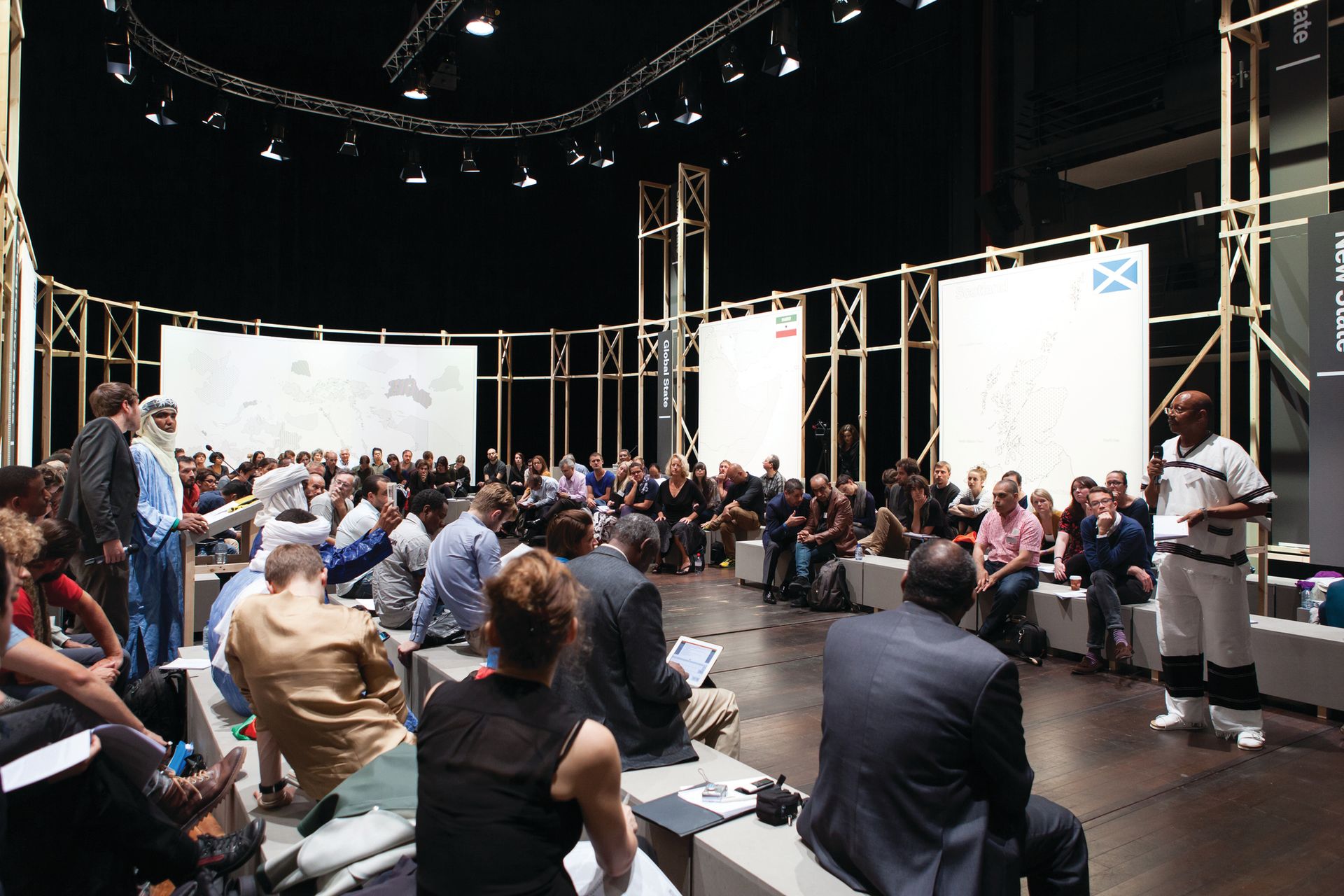
The third edition was intended to take place in Kochi, during the city’s first biennial, but the Indian authorities intervened before the banned political outfits could convene. The fourth summit was a grand affair hosted by the Royal Flemish Theatre in Brussels, discussing the “Stateless State”, with participants from all over the world.
The theme of October’s event in Syria was democratic confederalism, or stateless democracy, such as that practised in Rojava. The Syrian state withdrew its troops from this area to engage in the civil war elsewh ere in the country in 2012. Instead of joining the war, the citizens of Rojava declared their autonomy and set about constructing a socio-political system based on communal self-organisation, participatory democracy and a radical feminist rejection of patriarchal systems such as the state.
This system, remarkably, ensures the peaceful coexistence in Rojava of the majority Kurds and the Arab, Assyrian-Christian, Yazidi and other minorities. It has also produced the only armed forces—the YPG—that have managed to push back Isil militants. The YPG and the women-only YPJ are people’s protection units based on the same principles of communal self-rule.
These ideas and their underlying political philosophy originate from the prison writings of Abdullah Öcalan, the leader of the Kurdish Workers’ Party (PKK) and a figurehead of the Kurdish struggle over the past decades. At the request of the Turkish government, the PKK is banned as a terrorist organisation in Europe, the US and other countries. As a result, Rojava is not recognised by any international organisation. Its revolution is quarantined to such a degree that even I, a specialist on the Middle East, had not heard of it before Jonas Staal brought it to my attention.
Staal, who was born in Zwolle, in the Netherlands, in 1981, first came to Rojava in 2014. He is living here temporarily until the construction of the parliament is completed. The building will be bequeathed to the region, unlike the elaborate but temporary parliamentary structures that hosted the previous New World Summits.
These spatial configurations of democratic experiments are the main physical artistic output of the project: the scale models of the parliaments are exhibited together with photographs and documentary video recordings of the summits.
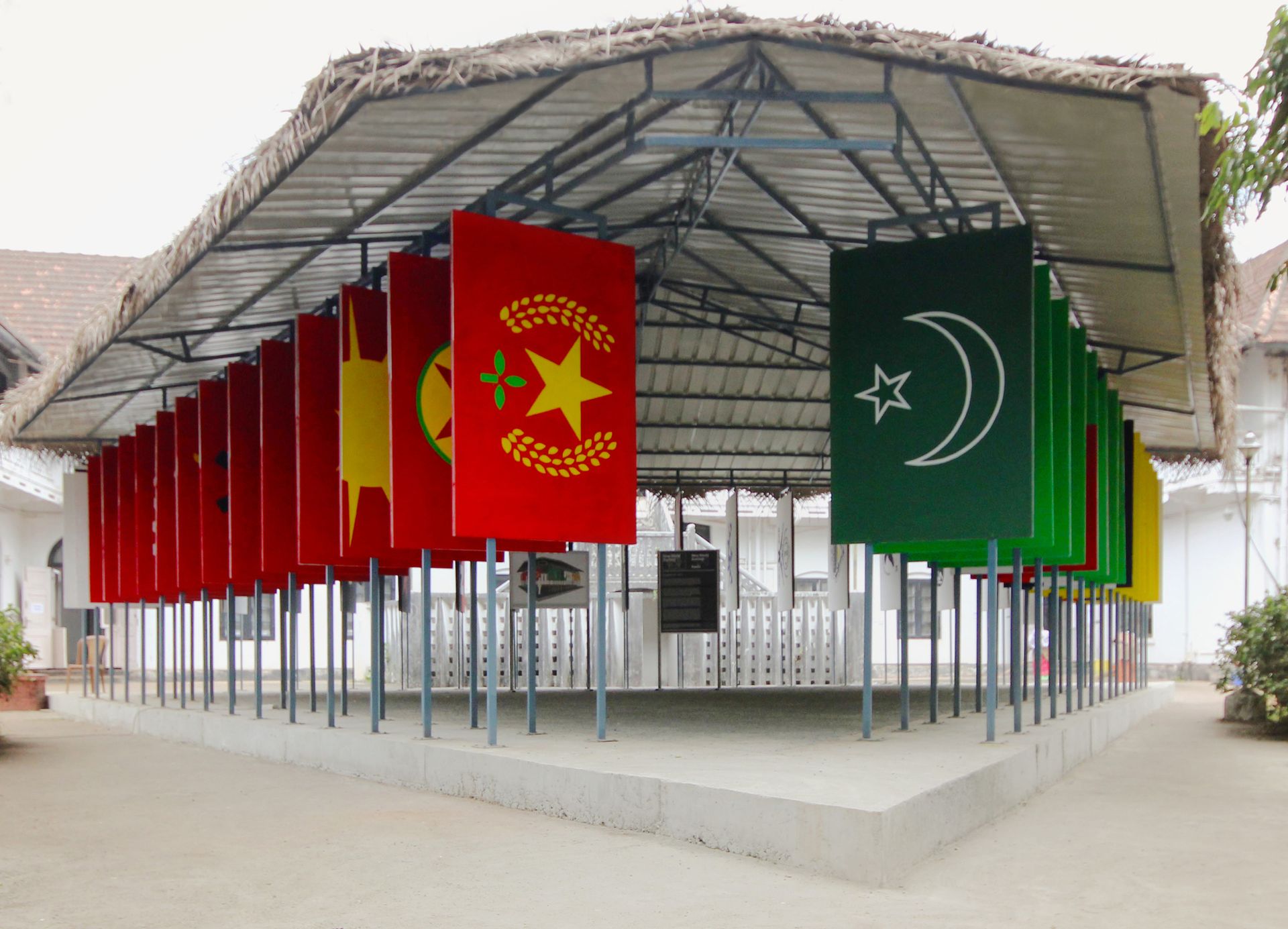
Revolutionary ideas
The fifth summit took place on 16 and 17 October. The three previous days were spent visiting the community organisations—media outlets, cultural centres, self-defence units, academic institutes, refugee camps and city councils—that have run Rojava since it became autonomous.
It was confrontational. I was stunned by the vitality, the innovations and the apparent success of these communities practising self-rule—but should I give in to the pull to join the revolution, to subscribe to its tenets, to commit myself ideologically? Should I relinquish my cherished position as a neutral observer and join the fray?
This is what Staal seems to have done. The decor he constructed for the summit was replete with flags, banners and slogans. For two days, we absorbed long speeches extolling counter-hegemonic ideologies or constructing counter-narratives, painstakingly translated from Kurdish and Arabic into English.
The New World Summit describes itself as an “artistic and political organisation”, but one may wonder what, exactly, is the artistic content. Staal does not seek to transform the event into a work by, for example, controlling the content so that it reads as a performance. In truth, the summit and the days preceding it seemed like an exercise in propaganda.
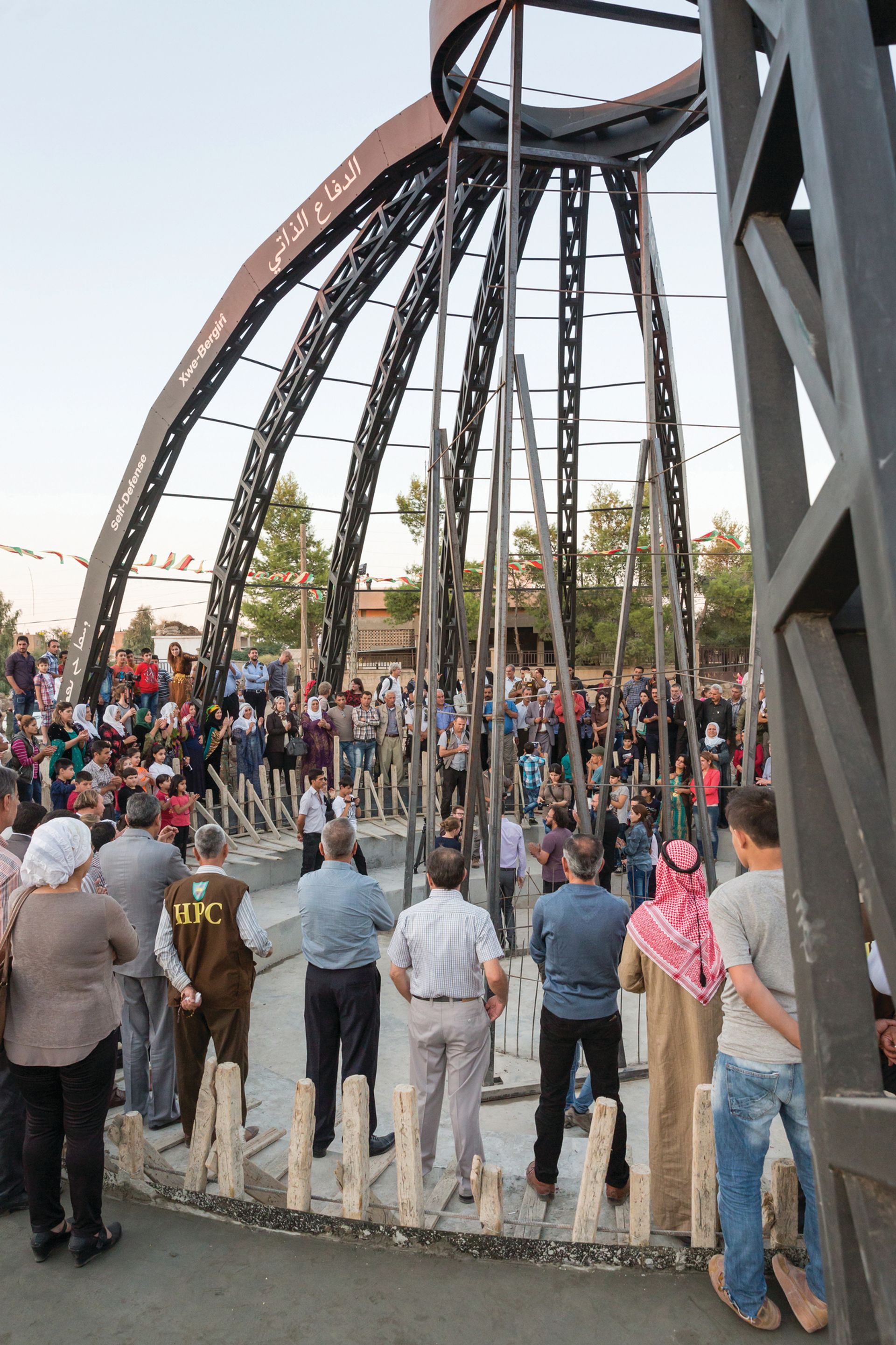
Staal does not refute this accusation. The point of departure for his artistic practice is the relationship between art and power; in his pamphlet Post-Propaganda, he claims that art has always been used for propaganda purposes by the powers supporting it. He adds that the democratic state’s support of the arts can be seen as a continuation of the support previously offered by the bourgeoisie, the monarchy or the Church, and is similar to the support given to the arts by the totalitarian regimes of our age. He writes that the freedom enjoyed by Modern and contemporary Western artists should epitomise the open, tolerant and free nature of our democracies, and that this was the objective of the CIA’s support for US Abstract Expressionist painters during the Cold War.
A vivid expression of this conundrum came in Staal’s public work for Dutch Liberation Day, in which a plane trailing the message “Be free” was followed by another with the warning “…or else”. Rather than trying to escape this relationship with power, Staal’s approach as an artist is to tackle it head-on. If all art is propaganda, he reasons, I should decide on the message myself. He embarked on a PhD arts programme at Leiden University to elucidate the relationship between propaganda and art.
Western propaganda, as exercised by “power monopolies”, he notes, shapes a normative sense of reality. In popular terms, this amounts to the belief that “there is no alternative”, or “however bad the current system, anything else would be much worse”. Staal juxtaposes with this a form of progressive or emancipatory propaganda (there is an alternative). This can only work, he argues, if the public is not the object of propaganda, but itself defines, refines and propagates this message.
This indicates what the role of the artist can be—an enduringly vexed question. Instead of being the decorator or jester of the powers-that-be, the artist can build coalitions with progressive forces in society and engage in awareness-raising to spread an alternative message.
For many years, Staal engaged with the Dutch government and public authorities, making them protagonists in his work. Take, for example, his project Art, Property of Politics, which included a range of activities: curating exhibitions to show the art collected by Dutch political parties, developing the prison model advocated by the far-right parliamentarian Fleur Agema and prompting closed-door marathon sessions with artists and politicians about their mutual relationship.
The Dutch government, apparently wishing to project an image of being progressive, pluralist and open at a time of cuts to cultural budgets, supports most of these projects. The parliament built in Rojava is also supported by the Mondriaan Fonds, the main public institution that funds the arts in the Netherlands.
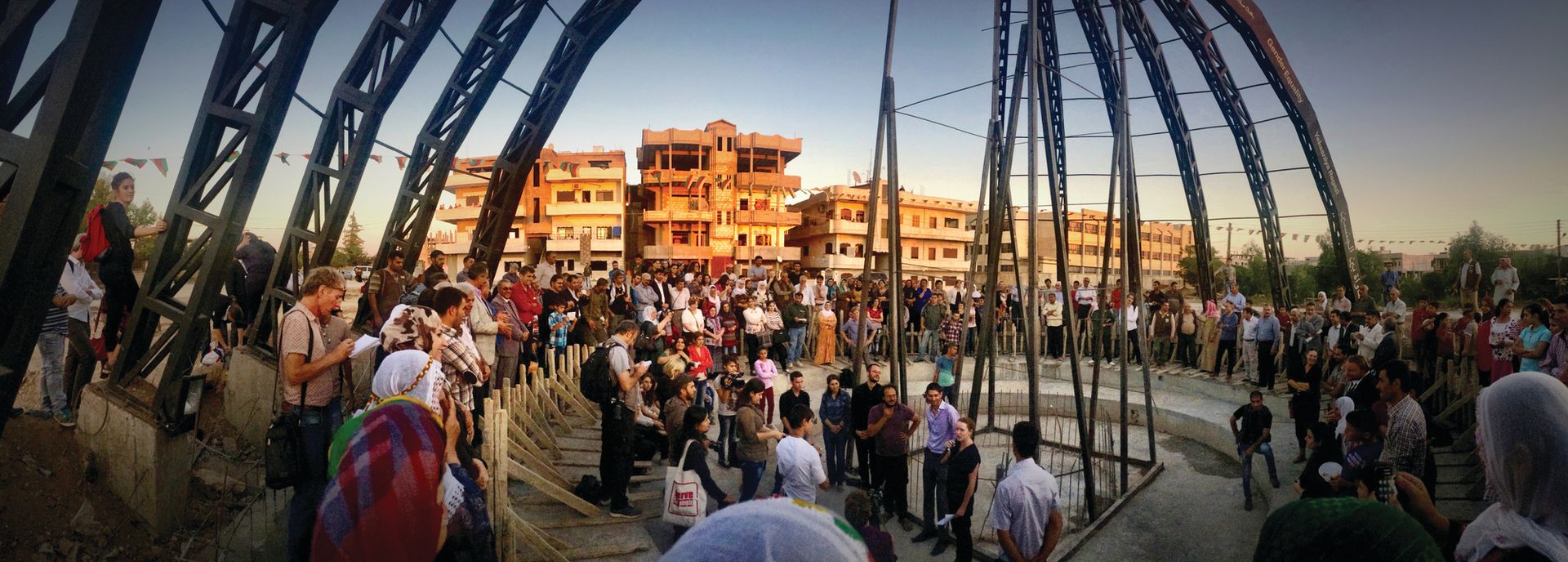
Staal eventually turned his attention beyond the Dutch political landscape, and towards the notion of democracy. He started by contrasting “democratism”, which he describes as an ideology propagated by power monopolies to ensure their continued rule, with “democracy”, which he sees as an ideal, as yet hardly realised in the world.
Next, he identified the shadow side of democratism: groups labelled as terrorist, stateless individuals and, at the international level, unrecognised peoples. These are all denied participation in the public sphere, so Staal resolved to provide them with a platform: the New World Summit.
Struggle for freedom
During the opening of the summit in Rojava, addressing a room packed with representatives of the local community, Staal said: “You may ask yourselves, what does art have to do with these stateless political struggles?” He went on: “We believe that if we want to create a different world, we will need a different imagination of what that world should look like. As such, every political imaginary needs an artistic imaginary as well.”
One of the characteristics of the history of Western art is a continuous struggle by artists for more freedom. In liberal democracies, where such freedom became a foundational concept, this led to a paradox. The field of art is constructed as a glass house within which artists can do anything they want, in full view of the public, but whatever happens in this glass house is safely separated from the real world by the tag of art.
Staal reacts to this depressing situation not by breaking down the walls—as artists using “institutional critique” or those artists grouped under relational aesthetics in the 1990s have tried to, with varying success—but by leaving the comfort zone of the Western art world, identifying causes he wishes to support and putting his artistic imagination to their service. As he puts it, he is creating a new arts infrastructure.
In the Netherlands, Staal has worked closely with the Pirate Party and the stateless group of refugees We Are Here, as well as being involved with recent student protests. He travelled to the Philippines to visit the grassroots organisations of the (banned) National Democratic Movement, and his team filmed their way through the desert of Mali, hosted by the rebel Tuaregs or Amazigh. Representatives of the World Amazigh Conference and of the National Democratic Movement were invited to speak in Rojava.
From a political viewpoint, one might wonder about some of Staal’s choices. Old Marxist guerrilla movements and a splinter faction of the Tuaregs fighting for independence for their homeland may seem mired in 20th-century politics at best, and, at worst, tainted by the crimes they have committed in their armed struggles.
But in Rojava, Staal has found a perfect partner. The appeal of its revolution is being compared with that of Republican Spain at the onset of the civil war, 80 years ago. Few progressive organisations could object to the enlightened philosophy that inspires the democratic experiment, even though it was written by Öcalan, who is serving a life sentence in solitary confinement for treason against the Turkish state. It seems that the transnational movement of stateless people finally has a home, at least as far as the New World Summit is concerned.
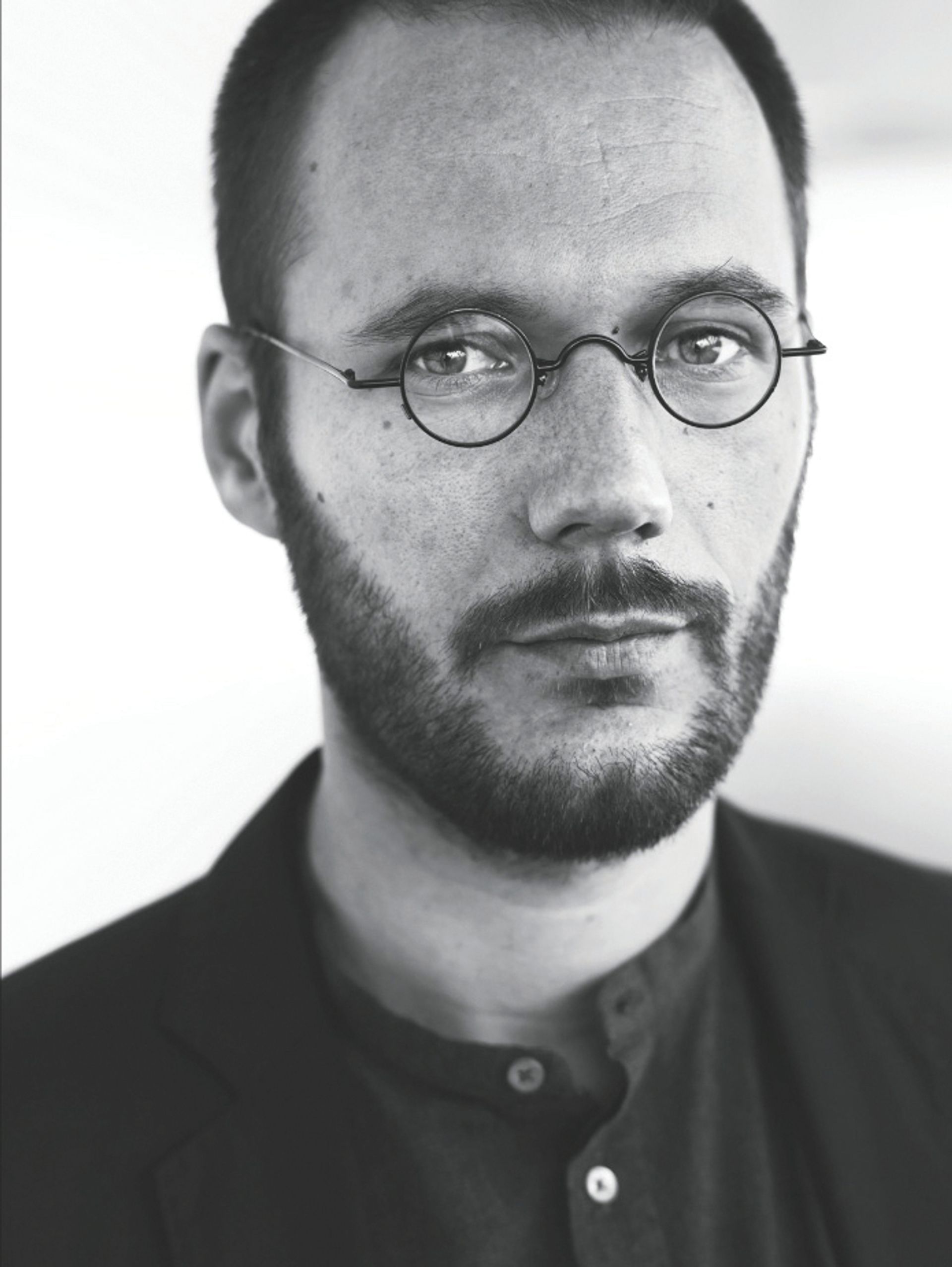
The parliament that Staal’s team is building in the town of Derik reflects the democratic ideals that inspire both the Rojava revolution and the New World Summit project. The structure is round, symbolising unity, and open on all sides, thus fully transparent. It is surrounded by a public park, embedding it firmly in the local community, and can be used for any public function.
The floor consists of descending concentric circles, like an ancient forum, creating ample seating space. The central circle is raised, so that speakers can use it as a lectern. This also means that no single person can occupy the centre. Three sets of six iron arches support three partial domes, which overlap to provide protection from the elements. The arches are inscribed in Kurdish, Arabic and Syriac with the six principles of the Rojava revolution: democratic confederalism, gender equality, secularism, self-defence, communalism and social ecology. The roof panels will be decorated with the insignia of the grassroots organisations driving Rojava’s social and civic transformation.
From his small office in Derik, Staal is preparing the final phases of the project, a summit in Utrecht, involving all the social movements that have accompanied the New World Summit throughout its four years, and then a grand finale in his completed parliament building in Rojava.
• Robert Kluijver is a curator and a lecturer in international relations

